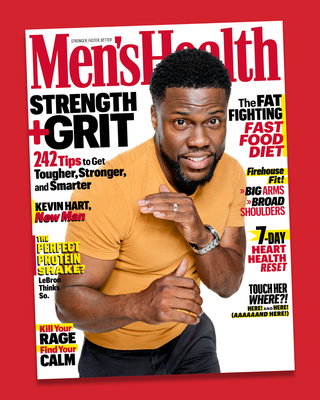Your Personal PT, Rachel Tavel, is a Doctor of Physical Therapy (DPT) and Certified Strength and Conditioning Specialist (CSCS) at Shift Wellness in NYC, so she knows how to get your body back on track when it’s out of line. In this weekly series, she gives you tips on how to feel better, get stronger, and train smarter.
You might not want to admit it, but it’s not uncommon to feel some pain between your legs. Maybe you over-lunged, sprinted too hard, made a quick kick or turn, or even got a little overzealous in the bedroom (it happens!). Now you’re in a world of discomfort, left with a sore groin and a sore ego.
A sore groin is never sexy, but it can happen to anyone. While the injury is most common in hockey and soccer players who put an extra eccentric strain on the inner thigh muscles, just one wrong move can cause this type of pain. If you’re experiencing pain in the muscles close to your pubic bone, or anywhere along the inner thigh, you may have pulled or strained one of the groin muscles, also known as the adductors.
Muscles of the groin include the adductor brevis, adductor longus, adductor magnus, obturator externus, pectineus, and gracilis. These muscles spread across the groin line and help stabilize the hip and lower extremity by keeping the leg in towards your midline.
A muscle strain can be caused by excessive use (taking on too high of a load) or over-stretching of the muscle. There can be sharp pain along the muscle or at its attachment points at the pubic bone or along the inner thigh. Weakness often follows pain leading to stiffness, range of motion limitations and dysfunctional movement patterns.
While rest, ice and exercise modification can be the first line of defense after an injury, you’ll want to make sure you do some gentle stretching and strengthening to maintain mobility and restore strength to the injured tissue. But, like all injuries, if pain is limiting your function during the day or stopping you from doing what you love, see a physical therapist for a complete assessment and individualized plan.
Your Move:
Move: While the injured muscle is healing, you’ll want to maintain range of motion at the hip and leg. Performing gentle active movement in the directions the hip allows (flexion, extension, abduction, adduction, external and internal rotation) will keep the joint from getting stiff and promote mobility in the joint.
Stretch: You’ll want to gently stretch the affected musculature within a pain-free range. Think lengthening and stretching but do not recreate any sharp pain while stretching. To stretch the groin muscles, try standing side lunges, a sitting straddle stretch or the butterfly stretch. Hold your stretch of choice for at least 30 seconds, and don’t forget to breathe.
Strengthen: Begin with isometrics (adductor ball squeeze in supine with knees bent, ball between knees for 10 by 10-second holds) before moving on to eccentric and concentric loading of the tissue. If it’s not painful, try concentric hip adduction against gravity by lying on the affected side, bring the opposite leg in front of your affected side’s knee (flat on table) and raising affected side’s leg up and down for 2 to 3 sets of 10.
Eventually you can progress to regular squats, sumo squats, lateral lunges, and sliders (stabilize the unaffected leg and slide the affected side out away from you on a reduced friction surface before bringing it back). To maintain cardio conditioning while recovering from this type of injury, trying biking instead of running.

Source: Read Full Article
